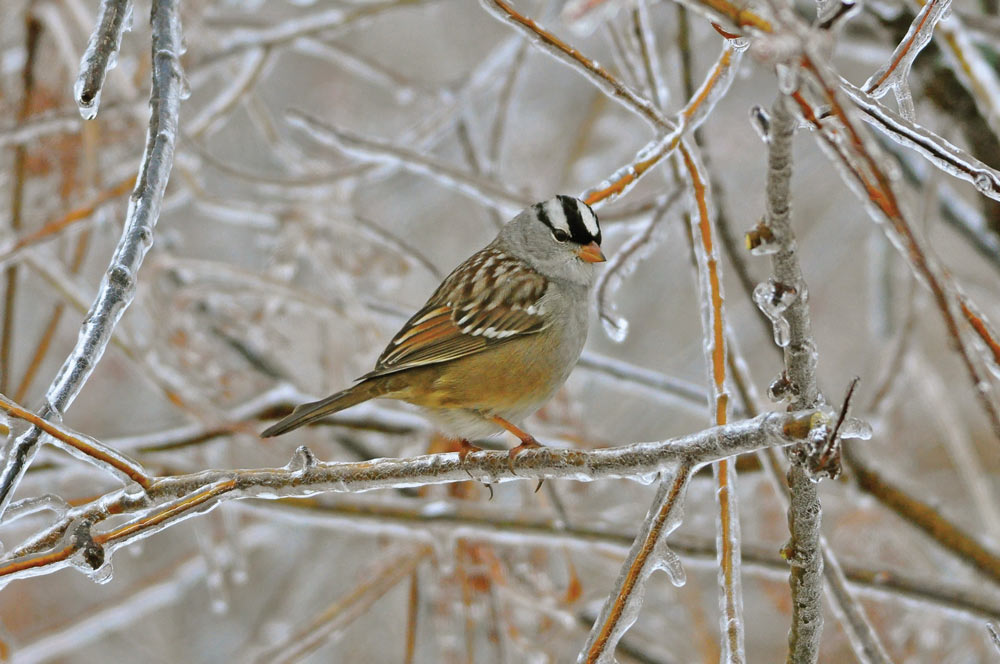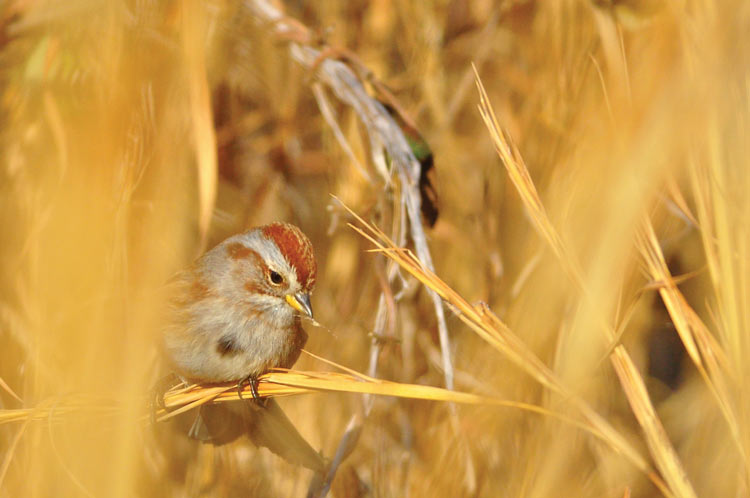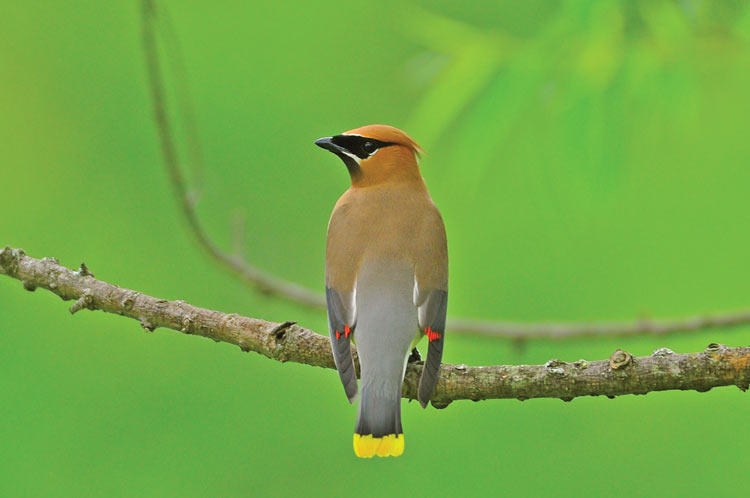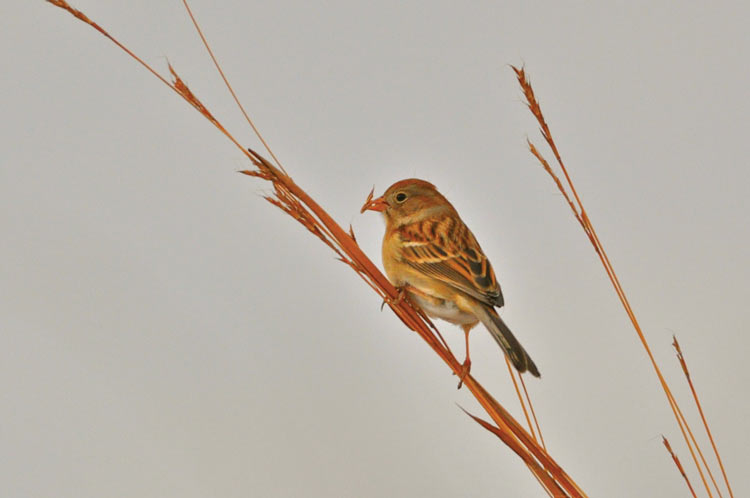Surviving the winter

How to help Virginia’s grassland birds
By Paula Combs | Photos by Amy Johnson
Winter can be tough on all of us, including our native birds. During the freezing temperatures and heavy snowfalls, we can swing by the grocery store before a winter storm and stay cozy in our warm homes. But birds are out in the harsh weather, trying to survive the season with dwindling resources.
Virginia’s grasslands are where certain bird species eat, sleep and breed, but their habitat is disappearing.
“It’s the most endangered habitat in North America,” said Amy Johnson, a research fellow working with Virginia Working Landscapes (VWL), a program of the Smithsonian Conservation Biology Institute in Front Royal.
“Only 3.4 percent of the world’s temperate grasslands are protected, and as a result, grassland birds have experienced a steeper and more geographically widespread decline than any other group of birds.”
A 2016 landbird conservation plan by Partners in Flight says the declines are due to degradation and loss of habitat through land use changes and development,
and are intensified by broadscale threats such as climate change and increasing
energy demands.
“Grassland habitats are becoming increasingly fragmented due to the invasion of non-native species, forest succession, agricultural intensification and urban sprawl in Virginia,” said Johnson. “And at least 80 percent of the breeding and wintering distributions of grassland birds are on our private lands.”
“We share the landscape with our livestock, our crops and our grassland birds. And the birds really need your help.”
-Amy Johnson
Johnson began working with VWL five years ago, and she has been tracking data on birds during the winter season since 2013.
“Along with several local nonprofits, including The Piedmont Environmental Council (PEC), Virginia Working Landscapes was established in 2009 to study and promote the sustainable use of our local landscape for native biodiversity through ecosystem research, habitat monitoring and community engagement,” said Johnson.
Preliminary results from her research on the birds’ winter habitat are already showing significant differences in avian abundance in warm season versus cool season grass sites.

Warm season grasses are native to North America, so they are adapted to our climate and have important relationships with our native wildlife. Cool season grasses are not native, and it was brought here to use for pasture grass and hay. The most common of these grasses are tall fescue and Kentucky bluegrass.
“On one property, we observed a hundredfold increase in wintering bird abundance, just one year after a field had been converted to native warm season grasses. Warm season grasses maintain their structure throughout the winter, leaving open pathways underneath the field canopy that facilitate foraging and provide much needed cover,” explained Johnson. “In contrast, cool season grasses tend to get matted down.”
According to Johnson, targeted conservation initiatives have been effective for conserving and restoring grassland habitat, but “in order to successfully implement the programs, it’s necessary to facilitate a more practical model of human-habitat relationships.”

WHAT YOU CAN DO
Virginia Working Landscapes recommends a number of ways a landowner can help grassland bird species survive the winter and flourish throughout the year.
- Become familiar with the birds in your field. This way, you can measure what populations are struggling or thriving on your property.
- Create a mosaic of grassland habitat. A variety of habitat types on your property will support more biological diversity. Manage your fields in patches and use different techniques such as rotational grazing or a prescribed fire. Incorporate native wildflowers such as scarlet beebalm and grasses like Indian grass, big bluestem and switchgrass throughout your property, as they support declining species such as prairie warblers, field sparrows and bobwhite quail. The seeds from native grasses provide an important food source for birds throughout the winter, too. To find native plant sellers in your local area, you can reference PEC’s Go Native Go Local guide, which can be obtained by calling 540-347-2334 or going online to pecva.org/gonative.
- Delay field maintenance until mid-July or August. While warm season grasses can support a variety of species year-round, hayfields and pastures support higher densities of bobolinks, eastern meadowlarks and grasshopper sparrows during the breeding season. According to Johnson, fields mowed before July can have up to a 94 percent nestling mortality. Delaying mowing will allow birds the time it takes to successfully fledge their young. If you do not hay your fields and are able to delay maintenance even longer, mowing fields once a year is optimal, preferably in very early spring.
- Postpone fall cleanup, such as bush hogging and burning brush piles, until spring. This allows crucial habitat for the birds over the winter.
- House cats kill billions of birds and other critical amphibians and small mammals vital for our ecosystems every year. Keeping cats indoors will help these other species survive.
- Reduce the use of pesticides where you can. When pesticides kill insects, the birds’ lose their most important protein source during the breeding season.
- Keep fence rows “messy.” Leave the overgrown plants, or let the overgrowth go a little before trimming. This provides extra habitat for birds.

“We share the landscape with our livestock, our crops and our grassland birds. And the birds really need your help. I urge landowners to commit to at least one of these recommendations to help conserve our region’s grassland birds and their habitats,” said Johnson.
If you would like the Virginia Working Landscapes to consider your property for their research, send an email to [email protected]. ML


